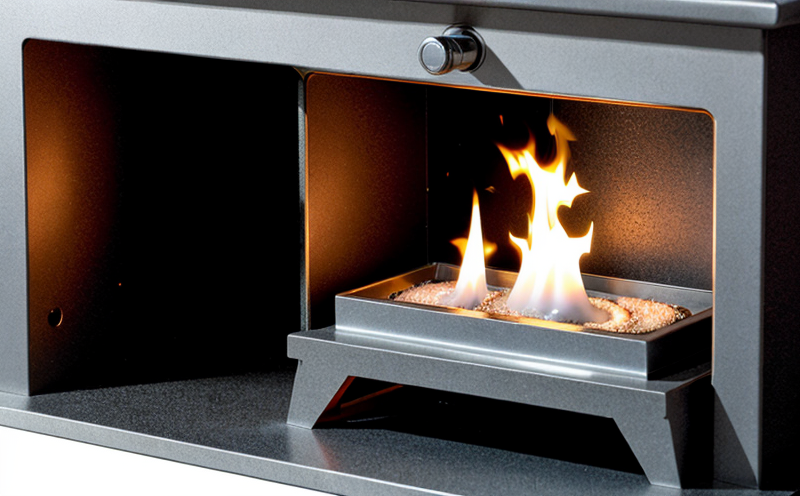Surface Flame Spread Testing of Rubber Materials
The surface flame spread testing of rubber materials is a critical aspect in ensuring fire safety. This service assesses the extent to which a material can ignite and continue burning under controlled conditions, focusing on the rate at which flames propagate across its surface.
Rubber materials are widely used in various sectors such as automotive, construction, electrical appliances, and footwear due to their flexibility, durability, and insulating properties. Ensuring that these materials do not contribute significantly to fire hazards is paramount for public safety. The testing of rubber materials helps manufacturers comply with stringent regulations, ensuring the products meet international standards.
The testing process involves exposing a specimen cut from the material under specific conditions in a controlled environment. The specimen's behavior when exposed to flames is recorded and quantified using various metrics such as flame spread index (FSI) or the distance over which the flame spreads per unit time. This data provides valuable insights into the material's flammability characteristics.
The test apparatus used for this purpose includes a specially designed chamber that can simulate real-world fire scenarios. The specimen is placed in this chamber, and flames are introduced from one end. The behavior of the rubber surface as it interacts with the flame is then observed and recorded by trained technicians using high-speed cameras and other advanced instrumentation.
One of the key factors influencing the outcome of surface flame spread testing is proper specimen preparation. Prior to testing, the samples must be cut precisely to standard dimensions and specifications. This ensures consistency across multiple tests, allowing for accurate comparison and evaluation. Preparing specimens in a controlled environment also helps mitigate external variables that could affect test results.
The acceptance criteria for rubber materials vary depending on their intended use and regulatory requirements. For instance, automotive seat covers may have more stringent limits on flame spread than electrical insulation materials. Compliance with relevant standards such as ISO 13948 or ASTM E652 is essential to ensure that the material meets industry expectations regarding fire safety.
Understanding the real-world implications of these tests is crucial for quality managers and compliance officers. By identifying potential weaknesses in a material's design early on, engineers can make informed decisions about product development and modification. This proactive approach not only enhances overall product performance but also reduces risks associated with non-compliance penalties or recalls.
For R&D engineers working within the rubber industry, surface flame spread testing serves as an invaluable tool for innovation. Through iterative testing cycles, they can refine formulations to improve both mechanical strength and thermal stability without compromising safety features. Similarly, procurement teams benefit from knowing which suppliers consistently deliver materials that pass rigorous scrutiny before being incorporated into larger assemblies.
To summarize, surface flame spread testing plays a vital role in assessing the flammability characteristics of rubber materials by measuring how rapidly flames travel across their surfaces under controlled conditions. This service supports manufacturers' efforts to develop safer products while ensuring adherence to regulatory frameworks globally.
| Applied Standards |
|---|
| ISO 13948:2016 - Rubber and plastics materials -- Determination of flammability properties by means of the surface flame spread index (SFSI) |
| ASTM E652 - Standard Test Method for Surface Flame Spread of Plastic Materials Using a Hot-Stone Method |
Quality and Reliability Assurance
- Conducting thorough pre-test inspections to ensure specimen integrity.
- Maintaining strict adherence to international standards during all stages of testing.
- Implementing rigorous calibration procedures for all instruments involved in the process.
- Educating clients on proper sample preparation techniques to enhance test accuracy.
Our commitment to quality and reliability is unwavering. We employ experienced technicians who adhere strictly to prescribed protocols, ensuring accurate data collection throughout each step of the testing procedure. Our state-of-the-art facilities are equipped with precision instruments capable of delivering precise measurements essential for reliable results.
We also offer detailed reports outlining every aspect of the test process, including initial observations, flame behavior analysis, and final evaluations based on established criteria. These comprehensive documents provide valuable insights into any areas requiring improvement or further investigation.
International Acceptance and Recognition
- The United States recognizes ISO 13948 and ASTM E652 standards for surface flame spread testing of rubber materials.
- European Union regulations mandate compliance with these same international norms to ensure uniformity across member states.
Our laboratory is accredited by reputable bodies such as ANSI/ASQ, UKAS, and other national accreditation services, guaranteeing our methodology meets global expectations. This accredits that we consistently produce reliable results that are widely accepted worldwide.





